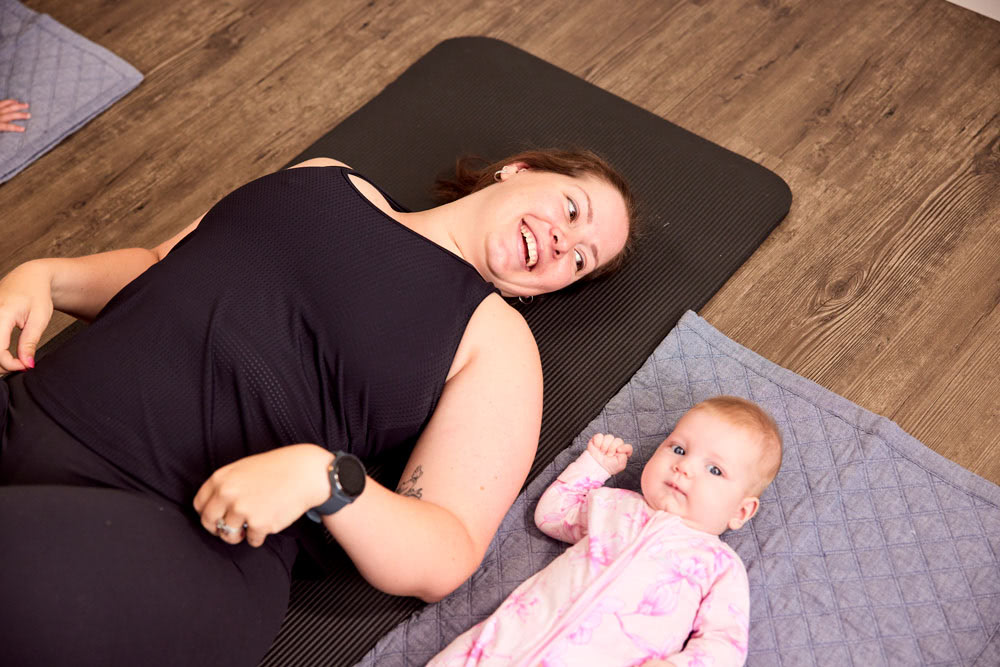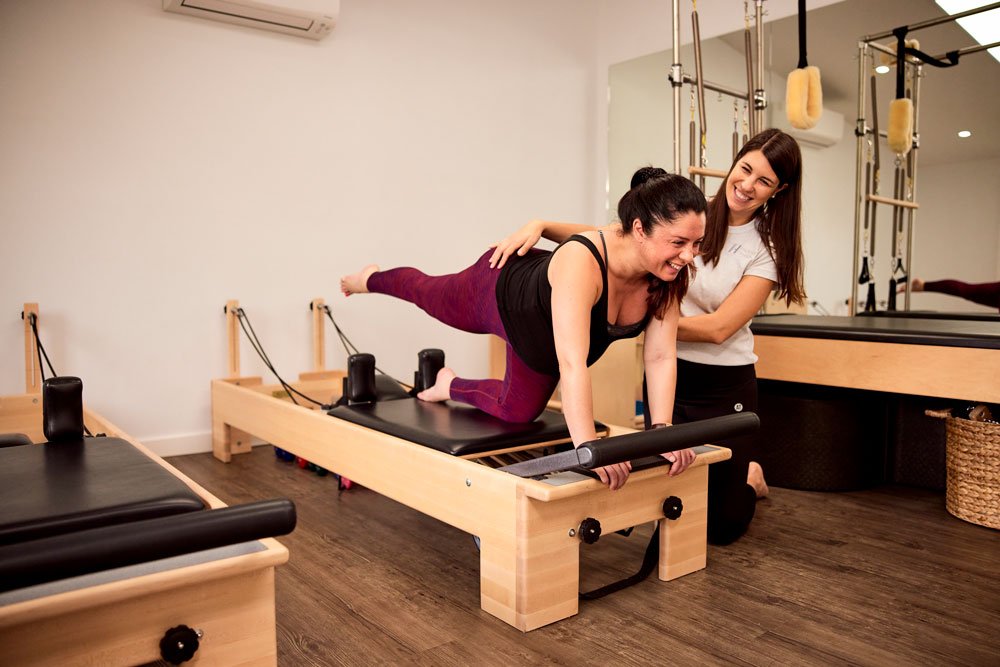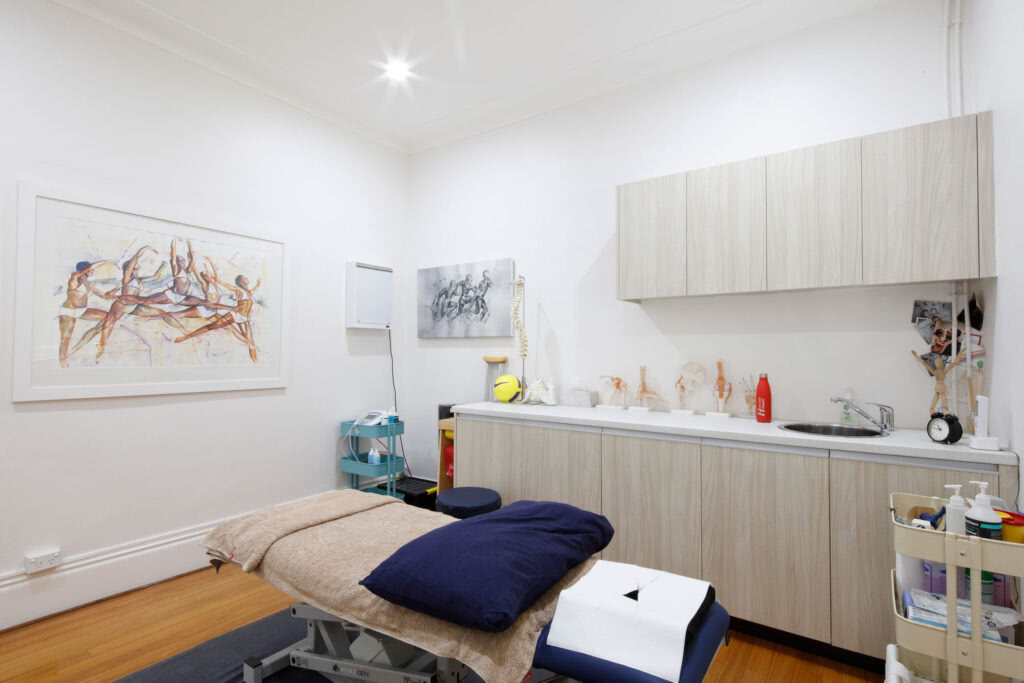Why Exercise is Important when Preparing for and During Pregnancy
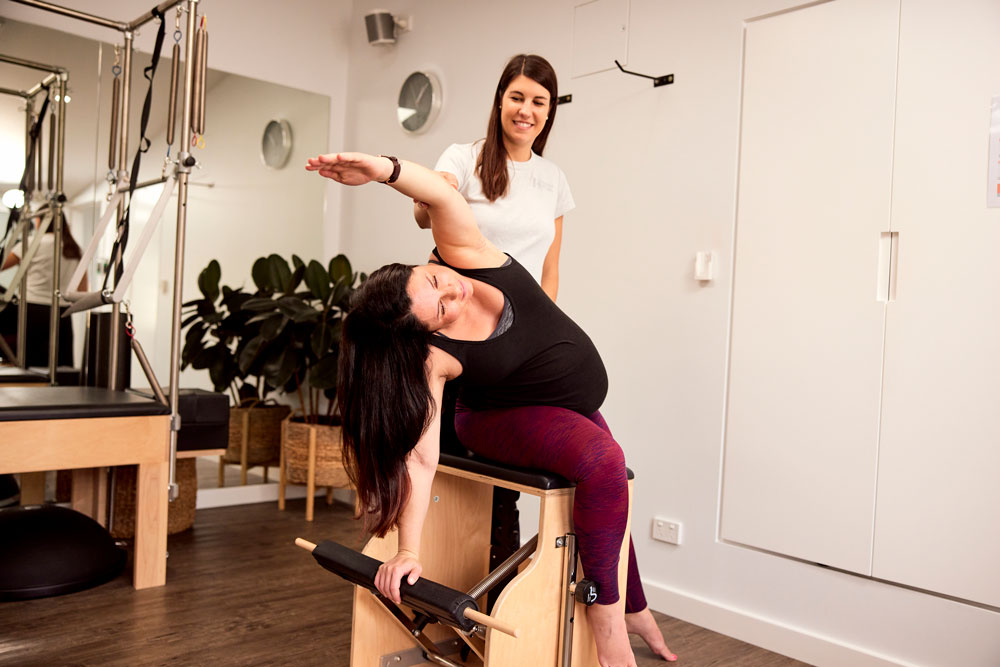

Real Talk About Pregnancy and Movement
Your back hurts. Your hips ache. You’re tired but can’t sleep. If you’re pregnant or planning to be for the second time, this probably sounds all too familiar, and you might benefit from incorporating regular exercise into your routine .
And maybe someone’s told you to “take it easy”—to put your feet up, avoid lifting anything, and definitely skip the gym. But here’s the truth: movement during pregnancy helps—not hurts—your body.
In fact, for most pregnant women, exercise is not only safe but also incredibly beneficial for physical, mental, and emotional wellbeing. At Incline Health, we work with expectant mothers every day to help them move better, feel stronger, and enjoy healthier pregnancies—every step of the way.
Let’s unpack the facts, bust the myths, and boost your confidence by exploring the importance of exercise in pregnancy—before, during, and after birth.
What Exercise Really Means When You’re Pregnant
Exercise during pregnancy doesn’t mean running marathons or smashing gym PRs. It’s about gentle, effective movement that supports your changing body, boosts circulation, and reduces pain.
It can be as simple as:
- Walking around your neighbourhood
- Stretching while watching TV
- Swimming a few laps in a heated pool
- Practising breathing and core control in a prenatal Pilates class
Pregnancy isn’t the time for intense or strenuous exercise unless you were already training at that level and have the green light from your health provider. Instead, it’s about listening to your body, moving mindfully, and choosing exercises that help—not stress—your muscles and joints.
That’s why working with a physiotherapist or chiropractor trained in prenatal care can make all the difference.
Why the Importance of Exercise in Pregnancy Can’t Be Overstated
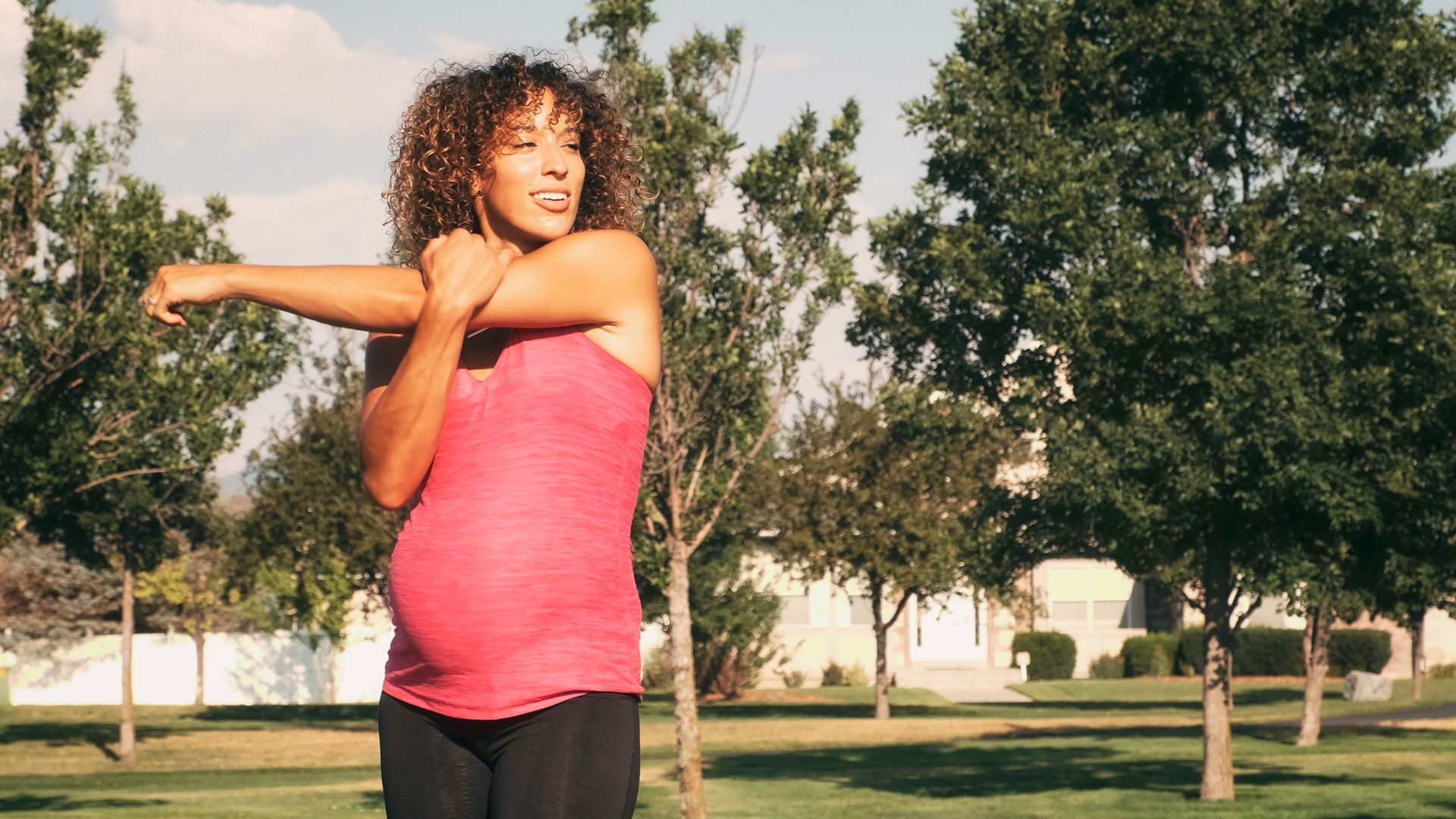

Physical activity during pregnancy delivers many benefits—for your body, your mind, your labour, and your recovery.
Your Body Will Thank You
Let’s start with the physical perks:
- Less back pain – Movement improves spinal alignment and reduces stiffness.
- Better sleep – Gentle exercise helps regulate your nervous system and promotes deeper rest.
- Improved posture – A strong core and balanced muscles support your growing bump.
- Healthier weight gain – Regular movement helps regulate blood sugar and reduces excess weight gain.
- Reduced risk of pregnancy complications – Physical activity helps lower your chances of developing conditions like gestational diabetes, preeclampsia, and high blood pressure.
- Improved circulation – Moving your body increases blood flow, helping to reduce swelling and boost oxygen delivery to your baby.
Your Mind Will Thank You Too
The mental health benefits of prenatal exercise are just as significant:
- More energy – Even a short walk can shake off fatigue.
- Reduced anxiety and depression – Movement releases feel-good endorphins and lowers stress hormones.
- Improved mood – Exercise is a powerful mood stabiliser, especially during hormonal shifts.
- Greater body confidence – Moving with intention helps you feel more connected to your body and its strength.
- Mindfulness and breath awareness – Many prenatal exercise methods include breath work, which is helpful for labour preparation and stress relief.
Labour and Recovery Benefits
Active women tend to experience:
- Shorter labour – Strong, mobile muscles support more efficient birth.
- Lower risk of cesarean delivery – Exercise improves endurance and birth position flexibility.
- Stronger pelvic floor muscles – This helps control urinary incontinence and supports postpartum recovery.
- Faster tissue repair and healing – A fitter body often recovers faster.
- Quicker return to activity post-birth – Movement helps you bounce back sooner.
These aren’t just bonuses—they can be game-changing.
Don’t Guess—Get Checked First
Before diving into a prenatal workout routine, get a comprehensive check-up with a women’s health physiotherapist or chiropractor.
They’ll help you:
- Assess your posture, alignment, and core function
- Identify areas of weakness, tightness, or imbalance
- Address or prevent issues like sciatica, pelvic girdle pain, pubic symphysis dysfunction, or diastasis recti
- Set trimester-appropriate goals
- Avoid unnecessary strain or injury
Every pregnancy is different. Just because a friend did prenatal bootcamps doesn’t mean it’s right for you.
Safe Exercises by Trimester
Your exercise routine should adapt as your pregnancy progresses to accommodate different exercise intensity level . Here’s a breakdown of what’s generally safe and beneficial:
First Trimester (Weeks 1–12)
This is a time of massive hormonal shifts. Energy can be low, and nausea may get in the way. Focus on gentle, low-impact movement.
- Walking – Easiest way to stay active
- Swimming – Eases nausea and joint pain
- Stretching or gentle yoga – Helps manage tight hips and shoulders
- Breathing practice – Calms the nervous system
- Pelvic floor exercises – Strengthen early to prepare for birth
- Core activation – Learn how to engage deep abdominal and pelvic floor muscles without strain
Second Trimester (Weeks 13–27)
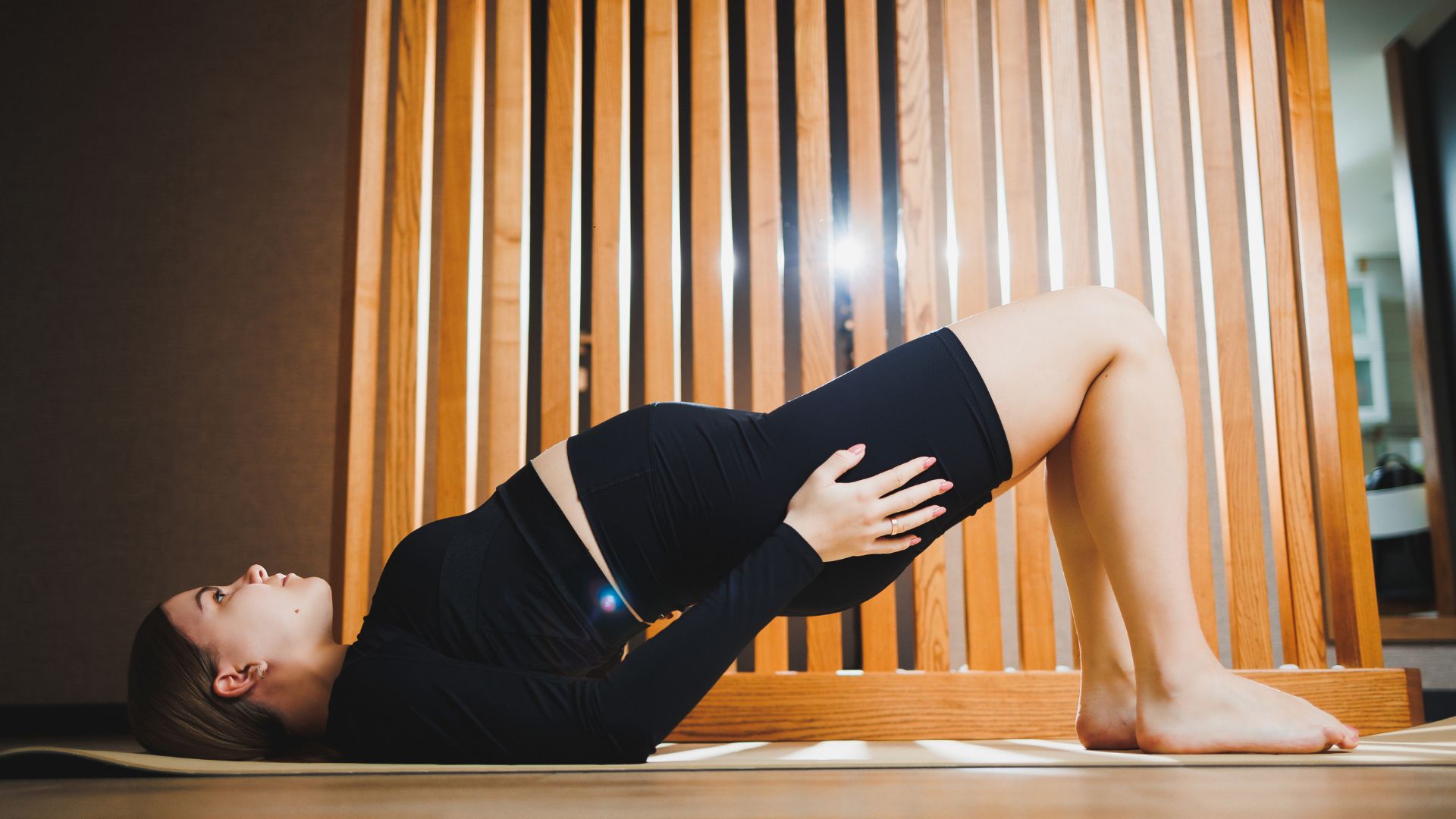

Many women feel more energetic and motivated. This is the ideal time to build strength, stamina, and posture awareness.
- Prenatal Pilates – Excellent for core and back health
- Light weights or resistance bands – Strengthens arms, legs, and glutes
- Prenatal yoga – Enhances flexibility, mental focus, and relaxation
- Brisk walking – Maintains cardiovascular health
- Balance and mobility training – As your centre of gravity changes
Avoid strenuous exercise or anything that creates downward pressure on your core unless specifically guided.
Third Trimester (Weeks 28–40+)
The focus now shifts to comfort, birth preparation, and maintaining mobility.
- Water-based movement – Reduces weight-bearing stress
- Breathwork and labour positions – Prepare both body and mind
- Stretching and mobility – Keep hips, pelvis, and back relaxed
- Pelvic tilts and stability exercises – For spinal comfort
- Supported squats or seated exercises – Promote upright birth positions
This is not the time to push through fatigue. Rest is essential. Think functional movement that supports your daily routine and upcoming labour.
When You Need Specific Exercises
Your physiotherapist or chiropractor might prescribe tailored exercises if you’re dealing with:
- Sciatica or nerve compression
- Pelvic girdle or pubic symphysis pain
- Breathing difficulties from rib flare
- Postural imbalance from your growing bump
- Decreased core stability
- Previous pregnancy complications or miscarriage
- Pelvic instability or hypermobility
They can also guide you on how to modify your existing fitness routine to avoid injury and stay active with confidence.
Common Pregnancy Exercise Myths (Busted)
Let’s clear up some outdated or downright wrong ideas:
- “Exercise causes miscarriage” – False. Most miscarriages are due to chromosomal factors, not physical activity.
- “Don’t lift anything” – Outdated. Lifting light to moderate weight with proper form is safe for most women.
- “Avoid raising your heart rate above 140 bpm” – Not evidence-based. Use the “talk test” instead—if you can talk while moving, you’re likely in a safe zone.
- “Don’t work your abs” – Wrong. You should train your deep abdominal muscles, not avoid them. A physio can show you how.
Essential Pregnancy Exercise Safety Tips
- Avoid lying flat on your back from the second trimester onward
- Stay cool – Skip hot yoga and don’t exercise in high heat
- Stay hydrated – Sip water before, during, and after workouts
- Listen to your body – Dizziness, shortness of breath, or pain are warning signs
- Use proper support – A good sports bra and well-fitting shoes make a big difference
- Stop exercising if you feel faint, contract regularly, or experience bleeding
When to Call Your Physio or Chiro Immediately
Book in right away if you notice:
- Persistent back, hip, or pelvic pain
- Numbness or shooting leg pain
- Changes in gait or posture
- New pain that worsens over time
- Trouble performing normal activities
- Unusual swelling or discomfort during or after movement
These are signs your body needs extra support—don’t wait for things to get worse.
Some Pregnancies Need More Support
Extra care may be needed if you have:
- Chronic back or pelvic pain
- Poor core or pelvic floor function
- History of urinary incontinence
- High-risk pregnancy conditions
- Previous traumatic birth
- Anxiety or fear around movement or birth
Hands-on therapy combined with a safe, tailored exercise program can make a world of difference.
When Hands-On Treatment Is the Missing Piece
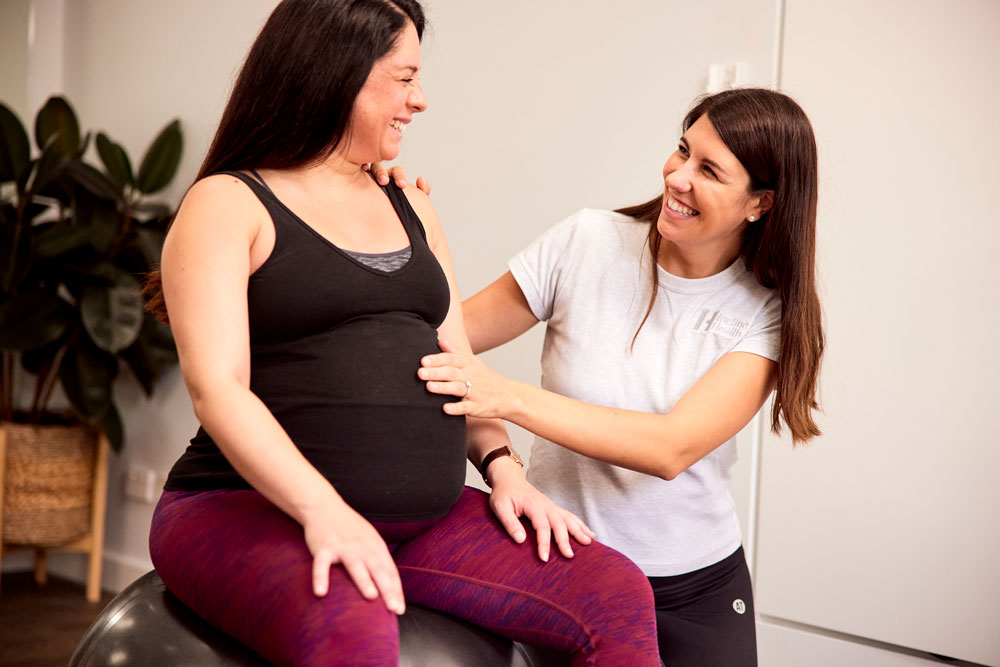

Sometimes, even safe exercises aren’t enough. That’s where manual therapies come in:
- Chiropractic adjustments – Improve joint mobility and reduce nerve compression
- Physiotherapy – Targets specific muscle dysfunctions and improves alignment
- Prenatal massage – Relieves tension, improves circulation, and supports relaxation
At Incline Health, we take a holistic approach—combining hands-on treatment with therapeutic exercise for the best outcomes.
Staying Active Through All Stages of Pregnancy
You don’t have to be an athlete. Just stay moving.
- Walk daily—even short bursts add up
- Stretch while watching TV
- Do squats while brushing your teeth
- Practice deep breathing at night
- Join a pregnancy-specific class in your area
- Work with a prenatal physio or chiro for expert guidance
Consistency beats intensity. And the right habits now can make your recovery smoother later.
Bottom Line: Your Pregnant Body Was Made to Move
Pregnancy is not a time to stop exercising—it’s a time to move with purpose, support, and confidence.
Whether you’re in your first trimester or your third, there are safe, effective ways to stay active. The benefits are real: less pain, better sleep, reduced stress, easier labour, and faster recovery.
But every body is different. So don’t guess.
Book With Our Pregnancy Specialists Today
At Incline Health, our experienced team of pregnancy physios, chiropractors, and prenatal Pilates instructors are here to support your movement journey.
We’ll work with you to:
- Relieve pregnancy-related pain
- Strengthen your muscles safely
- Prepare your body for labour
- Recover faster postpartum
We believe in evidence-based care, personalised plans, and helping you feel empowered in your body—every step of the way.
👉 Click here to learn more about our Pregnancy Physiotherapy services
FAQs: The Importance of Exercise in Pregnancy
How important is exercise when pregnant?
Exercise during pregnancy is incredibly important—not just for keeping fit, but for supporting nearly every aspect of maternal and fetal health through moderate intensity physical activity .
Regular physical activity while pregnant can:
- Reduce common discomforts like back pain, pelvic pressure, hip stiffness, and leg cramps
- Boost circulation, which helps reduce swelling in the hands and feet
- Improve sleep quality, especially during the second and third trimesters when rest can be disrupted
- Maintain a healthy weight gain throughout pregnancy
- Increase strength and stamina, helping your body adapt to the physical demands of pregnancy and birth
- Support mental health, reducing symptoms of anxiety and depression
- Enhance energy levels, so you feel more capable of managing daily tasks
- Prepare your body for labour by improving muscle tone, posture, and pelvic floor strength
- Aid in quicker postpartum recovery, particularly when you’ve maintained muscle strength and mobility throughout pregnancy
The importance of exercise in pregnancy can’t be overstated—it benefits not only the expectant mother, but also her baby.
Importantly, exercise in pregnancy is generally safe for most women. In fact, the Australian Department of Health, along with global bodies like the World Health Organization (WHO) and the American College of Obstetricians and Gynecologists (ACOG), recommend that healthy pregnant women engage in at least 150 minutes of moderate-intensity activity per week.
Of course, any exercise program should be tailored to the individual. This is why it’s best to check in with a qualified physiotherapist or chiropractor who specialises in prenatal care before starting or modifying an exercise routine.
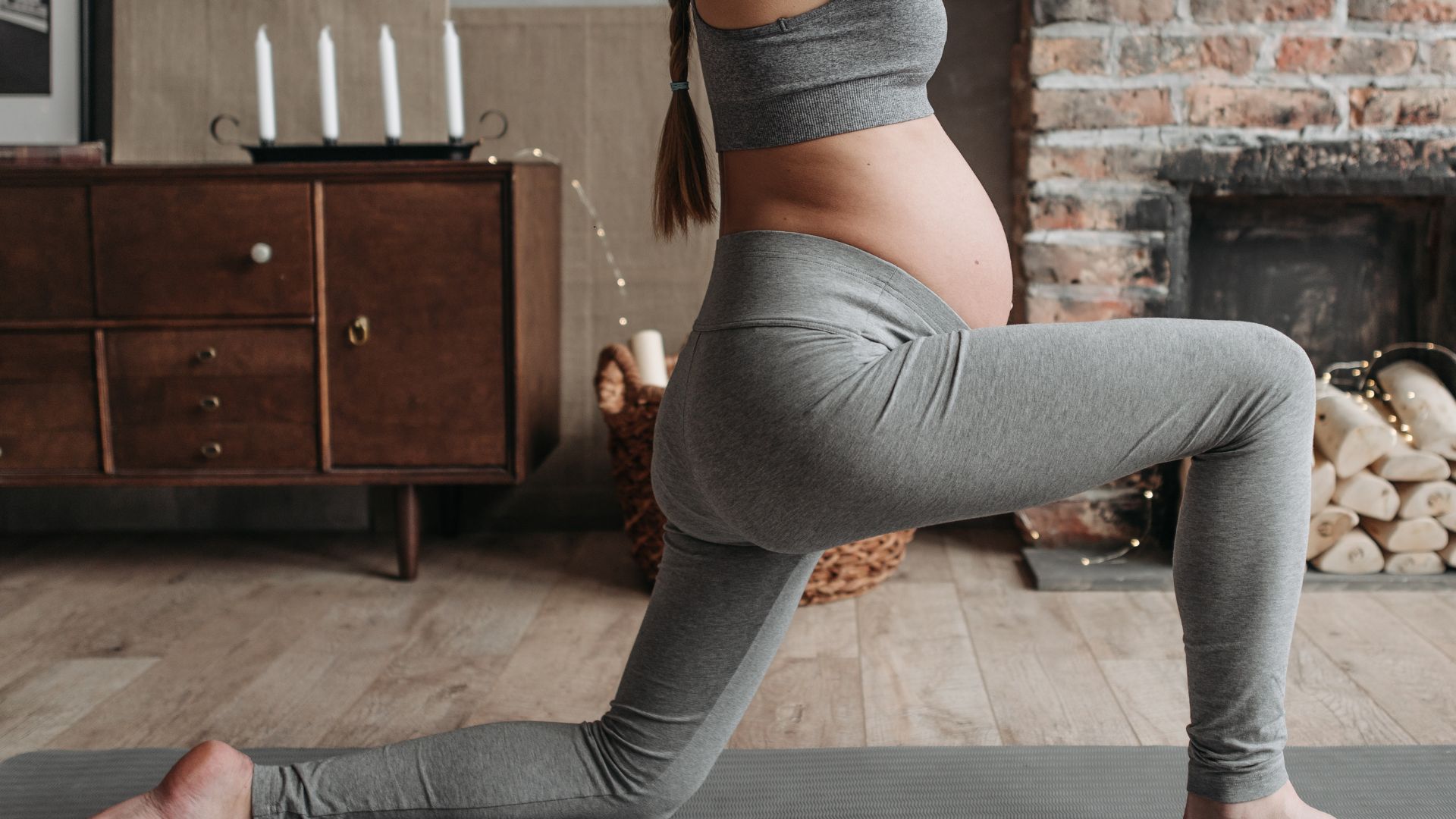

Why is exercise important for getting pregnant?
Exercise can be beneficial even before conception. If you’re planning a pregnancy or trying to conceive, staying active may help you lose weight, improve your overall fertility, and prepare your body for the physical changes to come.
Here’s how:
- Improved hormonal balance – Regular physical activity helps regulate hormones that play a role in ovulation and menstrual regularity
- Healthy weight management – Being either underweight or overweight can impact fertility. Exercise can help achieve and maintain a healthy BMI, which may increase your chances of conceiving naturally
- Enhanced blood flow – Exercise improves circulation to the reproductive organs, which is crucial for healthy ovarian function and uterine lining development
- Better insulin sensitivity – For women with polycystic ovarian syndrome (PCOS), exercise can help improve insulin regulation, potentially enhancing ovulation and fertility outcomes
- Reduced stress levels – Trying to conceive can be emotionally taxing. Movement helps manage stress and improves overall mental wellbeing, which can influence hormonal balance
- However, extreme or high-intensity training—especially when combined with inadequate nutrition—can interfere with ovulation. The goal is moderate intensity exercise that supports rather than stresses the body. Activities like walking, Pilates, swimming, and gentle strength training are ideal for women preparing for pregnancy.
How does exercise help a baby in pregnancy?
Many people focus on how pregnancy fitness helps the mother—but there’s growing evidence that it also benefits the baby.
Here’s how exercise during pregnancy supports your baby’s health and development:
- Improved oxygen and nutrient delivery – Exercise enhances blood flow and placental function, which supports healthy fetal growth and brain development
- Lower risk of gestational complications – Women who stay active during pregnancy may have lower rates of gestational diabetes, preeclampsia, and excessive fetal growth (macrosomia)
- Healthier birth weights – Babies born to active mums are more likely to fall within a healthy weight range—not too small and not too large
- Potential long-term health benefits – Some research suggests that babies born to physically active mothers may have lower risks of childhood obesity, cardiovascular issues, and metabolic conditions later in life
- Better adaptation to labour – A well-oxygenated placenta and healthier maternal fitness may help babies tolerate labour better
In short, exercise improves the internal environment in which your baby grows, giving them a strong start from the very beginning.
Why is it important to stay fit during pregnancy?
Staying fit while pregnant isn’t about aesthetics or achieving “snapback” postpartum goals. It’s about equipping your body and mind to handle the demands of pregnancy, birth, and early motherhood.
Here are the reasons why maintaining fitness throughout pregnancy is so valuable:
1. Muscle Support for a Growing Belly
As your uterus expands, your posture and balance change. Staying strong through your glutes, back, core, and pelvic floor helps support your spine and reduces discomfort from extra weight .
2. Stamina for Labour and Delivery
Labour can be a marathon—not a sprint. Being physically fit helps you cope with contractions, maintain upright labour positions, and push more effectively, especially during long periods of labour when the time comes.
3. Injury and Pain Prevention
Without strength and mobility, common conditions like sciatica, pelvic girdle pain, and diastasis recti may develop or worsen. Exercise helps minimise these risks by keeping your musculoskeletal system resilient.
4. Mental and Emotional Resilience
Staying active is one of the best things you can do for your mental health during pregnancy, and a general rule is to incorporate regular activities into your daily routine . It helps with mood regulation, self-esteem, and the ability to manage stress—all of which play a role in a positive pregnancy and birth experience.
5. Smoother Recovery After Birth
The fitter and stronger you are going into birth, the easier it often is to recover postpartum. Exercise during pregnancy also makes it easier to resume gentle movement after delivery, whether you have a vaginal birth or a cesarean.
6. Healthy Habits for Motherhood
Staying active during pregnancy lays the foundation for lifelong wellness habits that you can model for your child—and it makes those early parenting years more manageable when you have better mobility and strength.
Move with Confidence Through Every Stage of Pregnancy
Whether you’re preparing to conceive, in your first trimester, or nearing your due date, exercise is a key part of prenatal health. With the right professional guidance and a personalised plan, you can move with confidence through every stage of pregnancy.
Remember: every body is different. Your exercise program should reflect your individual needs, goals, and any existing health conditions. Always speak with a qualified health professional before starting something new.
At Incline Health, our experienced team of pregnancy physiotherapists, chiropractors, and clinical Pilates instructors is here to help you move safely and feel empowered through your entire journey.



